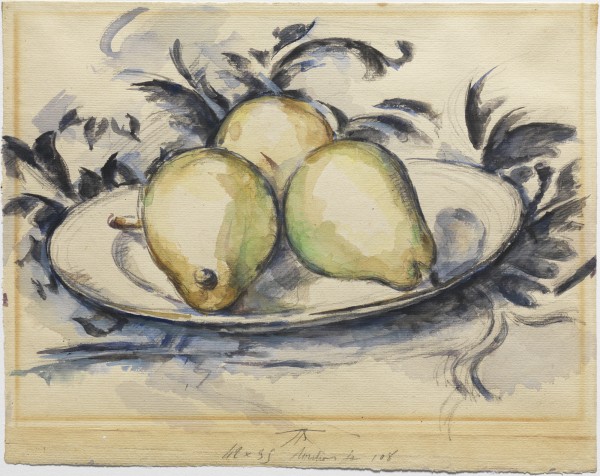Three Pears (Trois Poires)
Provenance
[Ambroise Vollard (1867–1939), Paris]; sold to Edgar Degas (1834–1917), Paris, Jan. 1895; by descent to estate of Degas, sold at auction, Galerie Georges Petit, Paris, 26–27 Mar. 1918, lot 105. [G(ustave) & L(éon) Bollag, Zurich, offered at auction but not sold, Gemälde und Handzeichnungen, Zurich, 3 Apr. 1925, lot 41]; [Max G. Bollag, Zurich]. Henry Pearlman, by 1956; Henry and Rose Pearlman Foundation, 1984.
Conservator's Note
Cézanne primarily used transparent watercolor, but here applied light blue opaque watercolor (gouache) over the black design in the background pattern. Most of the graphite pencil lies beneath the watercolor as an underdrawing.
Critical Perspective
This vibrant still life was exhibited in Cézanne’s first solo exhibition, held in November 1895 at Ambroise Vollard’s gallery in Paris, where it attracted the interest of the painters Edgar Degas and Pierre-Auguste Renoir. No doubt enticed by the work’s intense color and sensuality, the two artists entered a bidding match from which Degas emerged the victor—after lots were drawn to resolve the matter.

